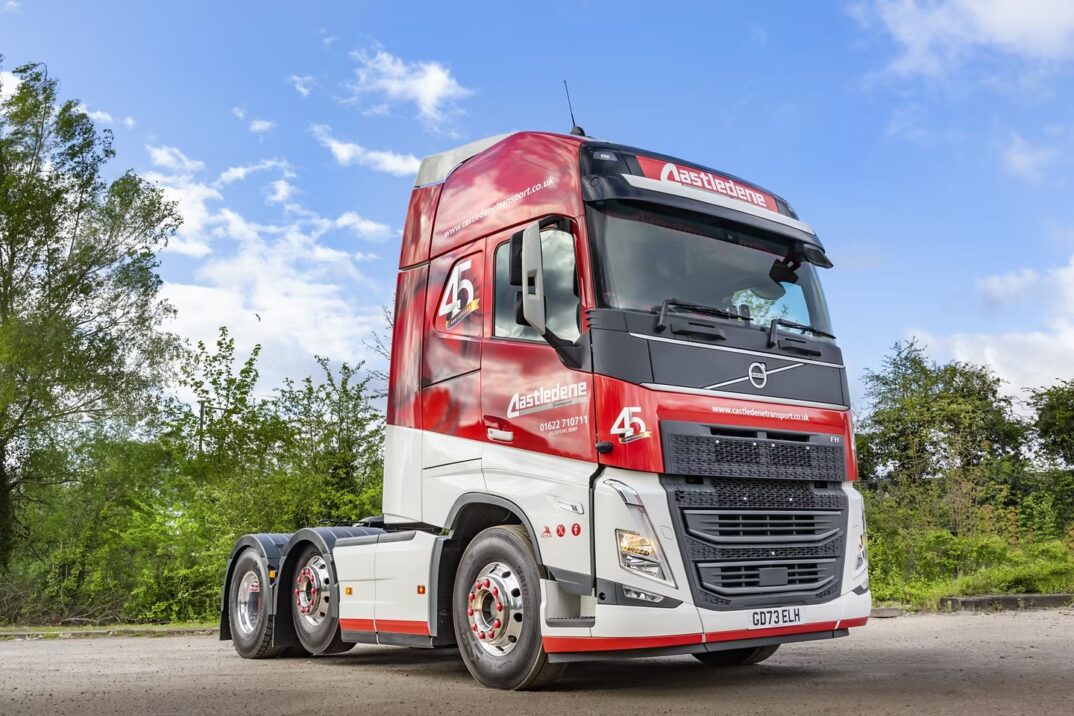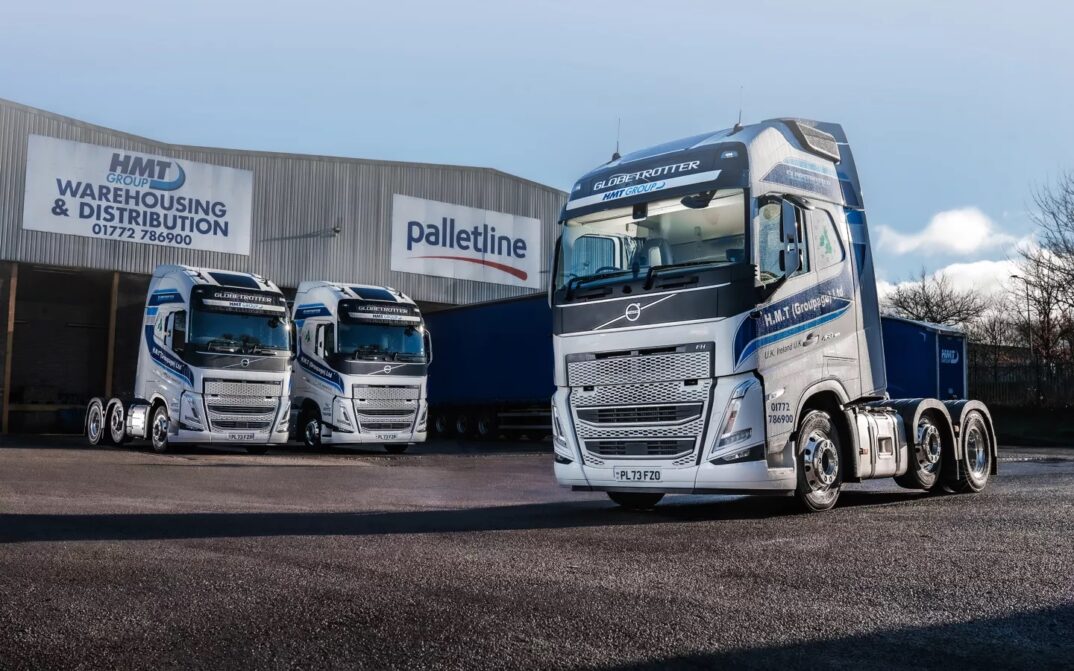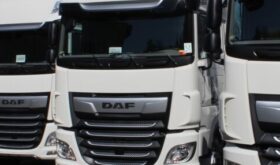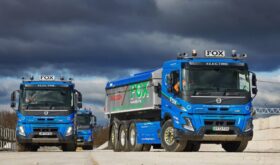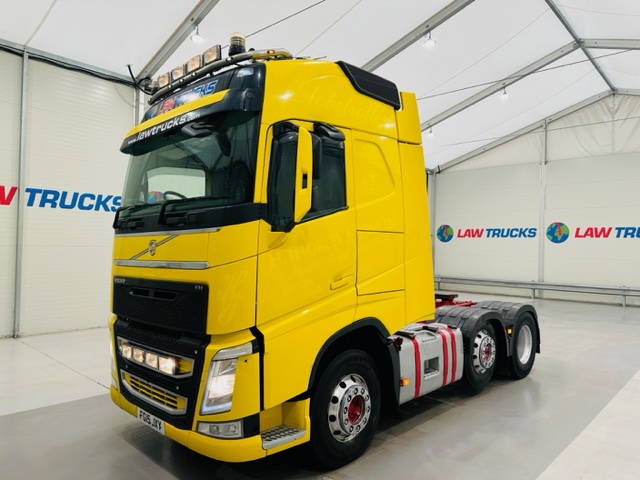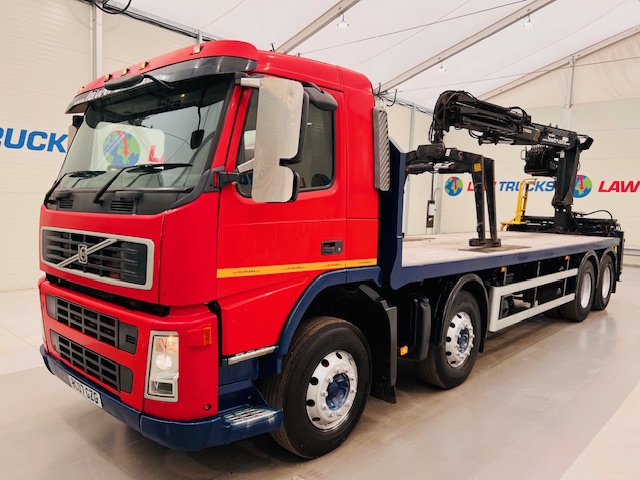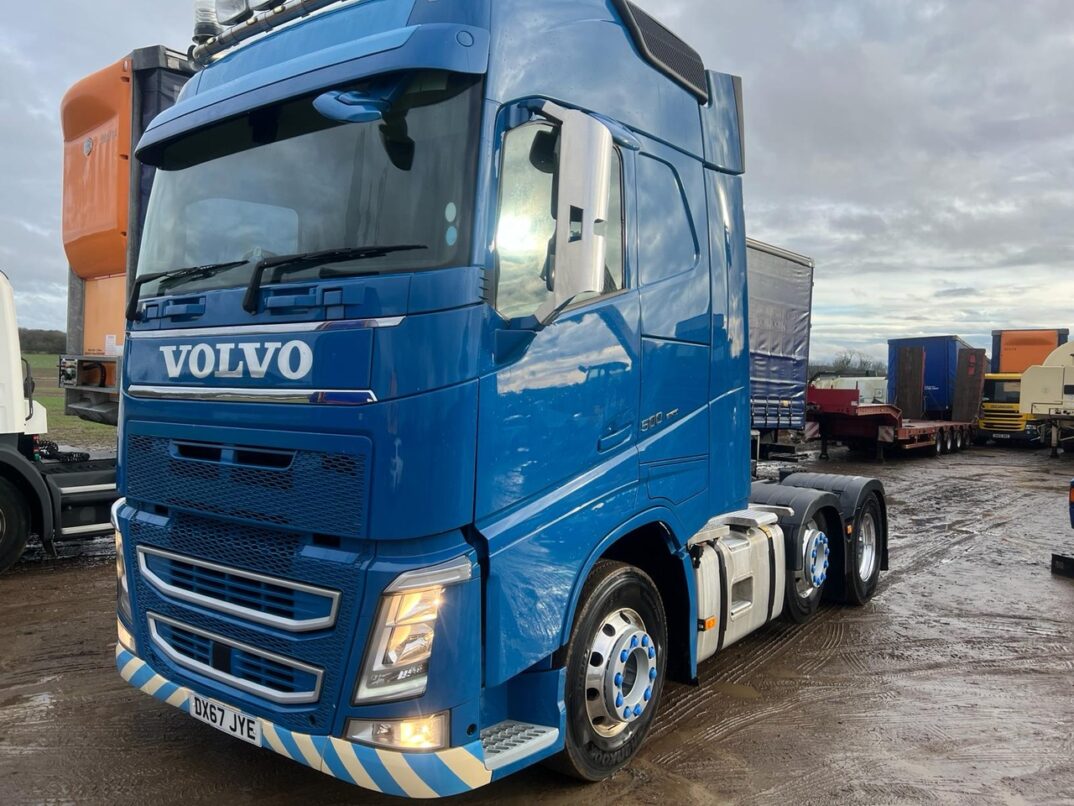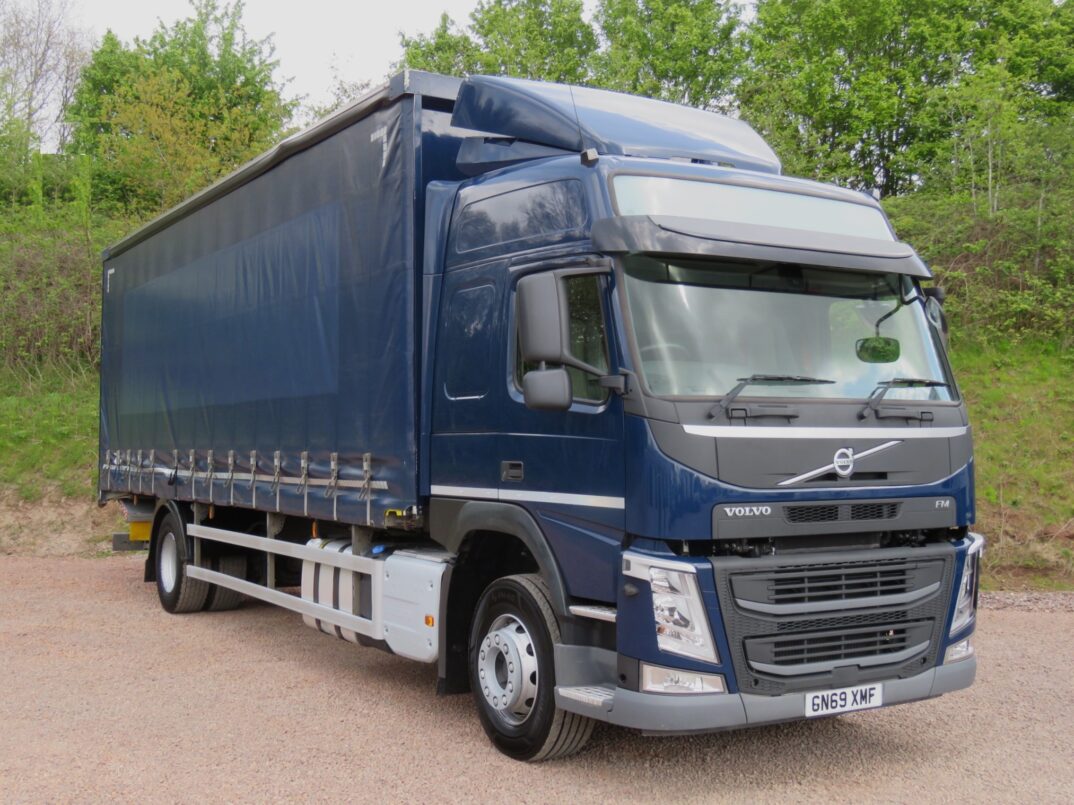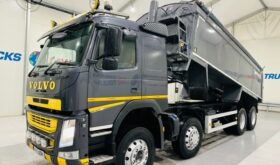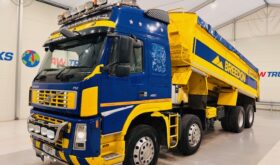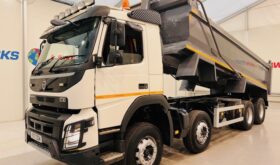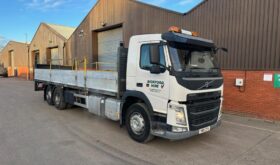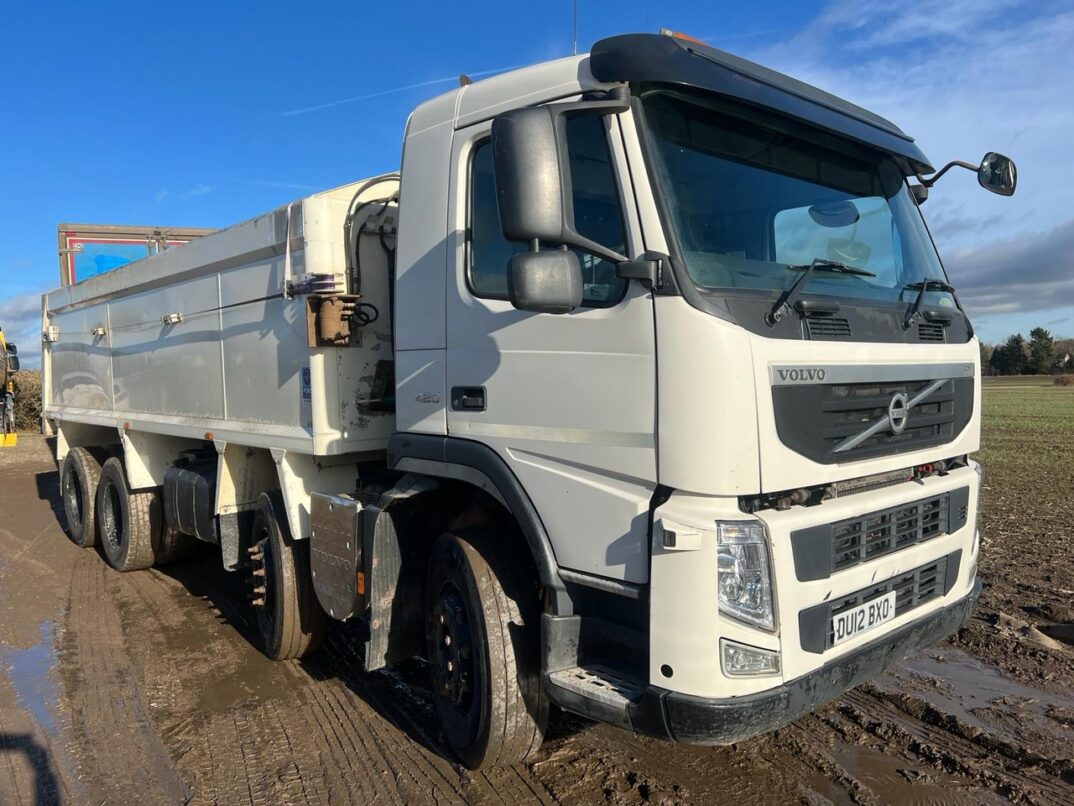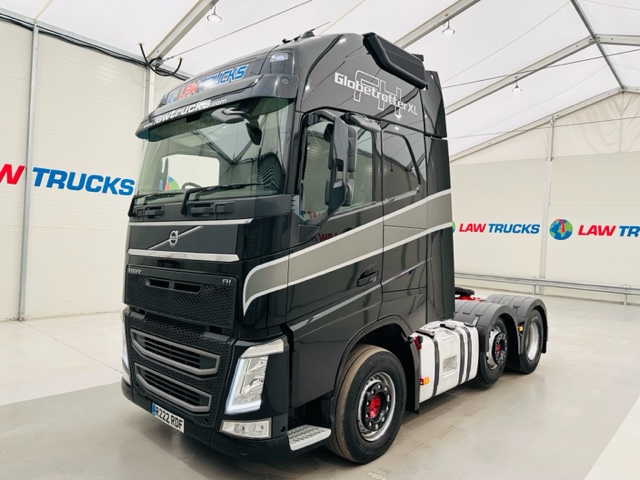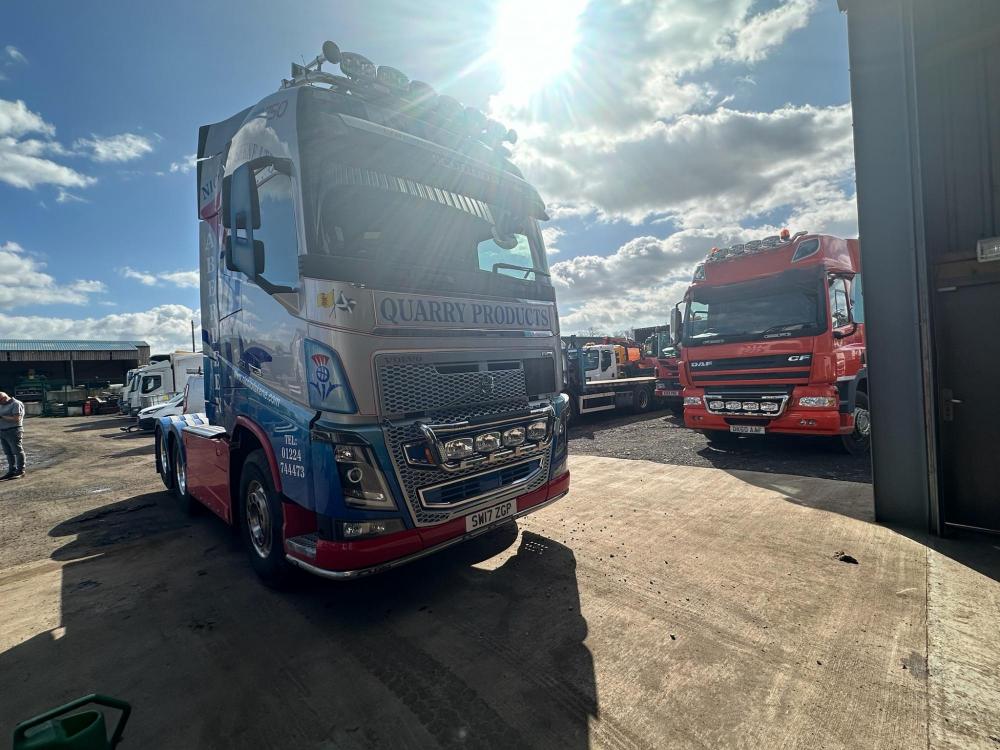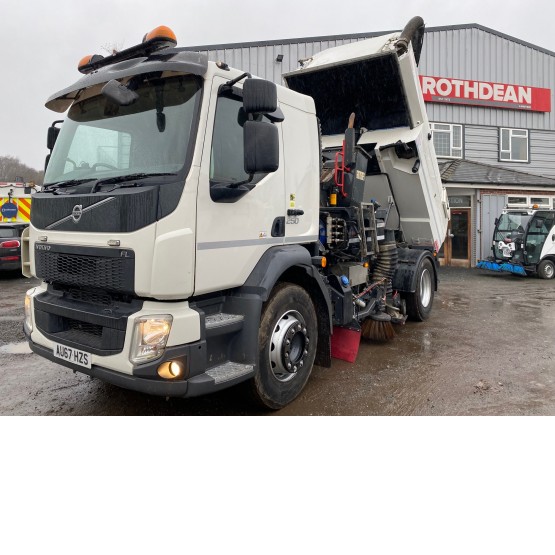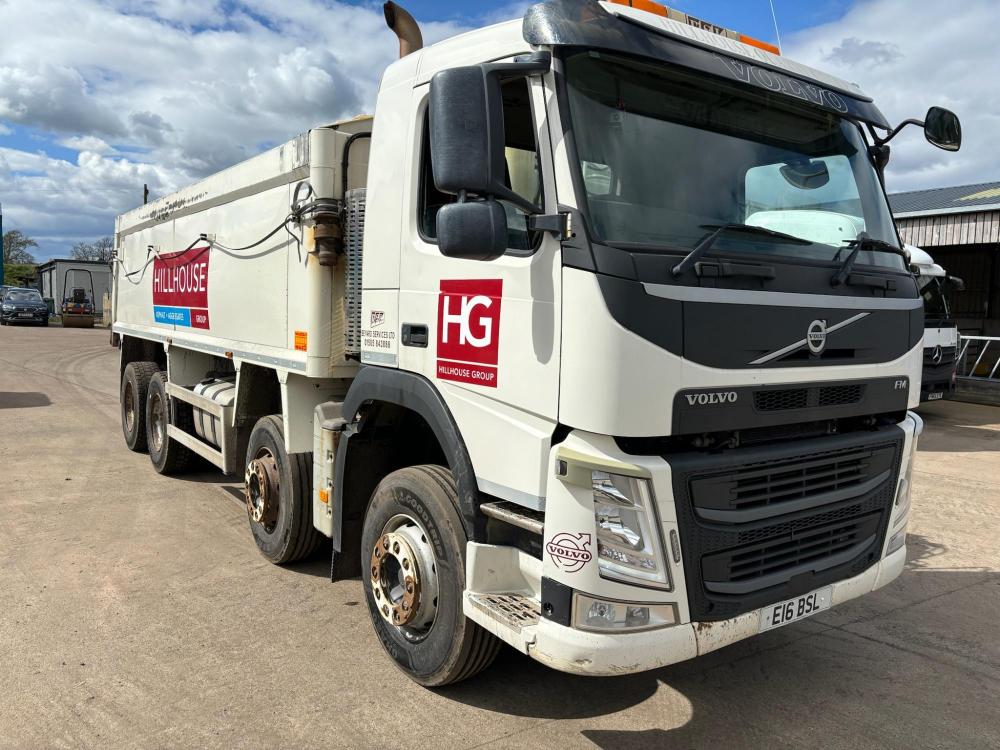Volvo Trucks for Sale (307)
You will find a great choice of used Volvo Trucks for sale on these pages. Volvo Trucks are seen as a premium truck brand in the UK, they are famed for their heavy trucks – especially for their desirable FH range. For most drivers, if it’s not a Scania then it must be a Volvo – especially an FH16 Globetrotter XL! There is a full range of heavy Volvo trucks for sale here from 18 tonnes upwards. Way back in the past, the company did experiment with a middleweight 7.5 tonner, but today focuses on what it does best – heavy trucks. Volvo Group are the owners of Renault Trucks, which reaches the markets the premium Volvo brand cannot reach – including lighter weight trucks. At Truckpages, we always advertise a great choice of the whole range of used Volvo trucks for sale. From a Volvo FMX tipper for the construction industry to a range-topping FH16.750 tractor unit – until Volvo brings out a more powerful one that is.
More Volvo Trucks Info
Volvo Truck – A Brief History
In the mid-1920’s Sweden’s Volvo started out attempting to make cars, although soon realised that the company would be better served manufacturing trucks. Production started with their ‘Series 1 in 1928 which was a lot more popular than the cars Volvo were making. This simple truck was sold without a cab so operators could have their own made. The ‘Series 2’ had a few changes, but still had a payload of just 1.5 tonnes and a GVW of 4.5 tonnes with a whopping 28hp!
The 1930s saw Volvo making diesel trucks that stood up better to international comparison and quickly became the market leader in trucks across Scandinavia. Starting with the LV71, the range of trucks improved with better braking technology, greater GVWs. Improvements in weight distribution and a more powerful engine seen in the heavy ‘Longnose’ LV18, 19 and 20. Volvo did start to make a forward control cab in the 1930’s – a precursor to the ‘F Range (F standing for forward control – or cab-over) – but there was not much appetite for this configuration so most Volvo Trucks were ‘conventional’ or bonneted with the engine out the front rather than under the cab.
Volvo Trucks after the War
The 1940’s saw Volvo manufacturing trucks for the Swedish Ministry of Defence but saw some beautiful designs in the post-war period, including the trend towards ‘sharp nose’ trucks. Proper heavy-duty diesels were introduced as Volvo moved up the weight range and moved away from the ‘Hesselman’ engines it favoured for the light and medium duty trucks. The 1950s saw Volvo Trucks become a lot more modern with sleeper cabs, turbocharging and direct injection diesel engines. Volvo’s ‘Titan’ L49 saw horsepower levels reaching a huge 185hp but, more importantly, saw the introduction of air brakes, power steering and the Volvo safety cab. The 1960s saw Volvo Trucks that todays trucks still have their design cues based upon. Check out the forward control F88 that replaced the ‘Titan’ and the smaller F86 in 1965 – everyone loved this truck and was popular in the UK even with its 8 speed synchro gearbox and the fact that it was assembled in Scotland helped it gain UK market leadership.
Volvo’s Swinging Seventies
The 1970s saw Volvo mixing it up with DAF, Magirus and France’s Saviem – the precursor to Renault Trucks to create a medium duty truck. Volvo launched their ‘F light duty trucks in 1975, albeit with a stronger cab than the other partners and turbocharged engines. Called the F4 and the F6 range we still see their heritage in today’s FE range of trucks. The F7 joined the ranks – replacing the much loved F86 with the F10 and F12 hitting the roads in 1977 replacing the F89 but operators had to wait until 1979 to get the Globetrotter cab. The 1980’s saw Volvo concentrate on chassis improvements to match the standard of the safety cabs. There were significant model upgrades in 1983 and 1987 which saw the launch of the F16 for the first time. There was a refresh of the light/medium duty F range – relaunched as the FL6 and FL4 available from 7 to 26 tonnes GVW and the FL7 and FL10 appeared in 1985.
Volvo Truck Technology Leaps in the Nineties
Technology was the main driver in the 1990s as the environment took on a more important role for all truck manufacturers. A new cab and new D12 engine for the F series saw the FH12 and the 16-litre FH16 born for the first time in 1993. The FH cabs were available in four different models; short day cab, sleeper cab with normal roof, Globetrotter roof with an extra high roof and (since 1995) the Globetrotter XL cab. The 1990’s also saw the launch of a FL12 range – a lower cab than the FH but using the same D12 engine – giving a choice of engines including a 7-litre, 10-litre and the 12-itre D12. Less successful was Volvo’s attempt at a lightweight truck – the FLC range which replaced the underpowered 3.6-litre FL4 seen in the 1980s. The back end of the 1990’s saw the Volvo FM range introduced to replace the FL range. A low entry cab with a strong relationship to the FH range, sharing many of its components.
Volvo Truck’s Current Models
The Modern Era 2000 and Beyond
You will still find plenty of Volvo Trucks for sale from the year 2000 onwards at Truckpages. Many will be destined for export sale or perhaps advertised for salvage. The best examples of trucks from this era will be heading for vintage truck collections. First to receive attention at the turn of the new millennium was the FL – the cab was still relatively modern, but Volvo’s engineers felt that a new chassis was needed. This meant that the technical systems were brought into line with the FH and FM ranges so that Volvo’s Dynafleet system could be introduced.
Volvo FH Range
Although introduced back in 1993 and updated in 1998/9 with the new D12C engine – already meeting Euro 3 standard ahead of the 2001 deadline. The first changes in the new millennium saw a revised front end to the cab and yet another new engine – this time the D12D using turbo compounding for the first time and the introduction of Volvo’s legendary I-Shift gearbox. The FH16 went on the missing list for a few years from 2001 while Volvo spent some time perfecting the 16-litre replacement, based on existing technology in the 9- and 12-litre engines. Launched in 2003, the result was an in-line 6-cylinder FH16.610.
2005 FH Range Change: As with the FM range, 2005 saw the FH12 change to the ‘FH’. As with the FM, the FH range also received the new 13-litre engine in readiness for the Euro 4 and Euro 5 legislation. Available with outputs of 400, 440, 480 and 520HP
2011 FH16 Upgrade: The launch of the FH16.750 in 2011 saw Volvo take the ‘most powerful truck’ title back. Also available at 550 And 650HP for more sensible operators.
2012 New Volvo FH: With a Hollywood-style launch, the 2012 model Volvo FH was set for the impending Euro 6 legislation and therefore was packed with new innovations. There was a choice between four cabs: short day cab, normal sleeper cab, Globetrotter cab and extra-spacious Globetrotter XL cab. Using just one engine size, it was available as a 420 up to a 540HP – operators could upgrade to the FH16 for yet more power.
2020 New Volvo FH Launched: As part of a total range review of their heavyweight trucks, Volvo revamped the FH with new dashboard flat screen technology, revised headlights and a larger Volvo logo on the grill. The company said the new FH was about making life better for the drivers.
Volvo FM Range
Originally launched in 1998, the FM range originally came with a three-engine line-up, but in 2001 the 7-litre option was dropped, leaving just the 9 and 12-litre FM9 and FM12. The FM was designed to be as close to the FH as possible, except for a lower cab – which means a higher engine tunnel, although in Globetrotter guise, the driver should still be able to just about stand up.
2001 FM Facelift: The 9-litre engine replaced both the 7-litre and the 10-litre outgoing engines and saw the I-Shift available in the FM range for the first time.
2005 FM Range Change: After 2005, Volvo renamed the ranges, dropping the swept volume part of the model number, so the FM9 and FM12 became simply the FM range. The new range was introduced with three cab options – day, sleeper and the famous Globetrotter cab. Just two engines; the 13-litre engine (the same as in the FH) and the 9-litre engine (which is unique to the FM range). Many truck buyers refer to these trucks as the FM13 and FM9, but these were never put on the cabs of the trucks.
2010 FM Facelift: Volvo launched the completely facelifted FM in 2010 alongside the launch of the FMX for construction industry use.
Another lift in 2013: With styling leaning heavily on the new FH range, the new FM received dynamic steering running lights and a new interior – of course with Euro 6 engines in time for the 2014 deadline.
2020 A Brand new Cab for the FH: Although looking similar in outward appearance, the slightly large new cab was launched in 2020. In addition, there are new light shapes, extra room for drivers as well as a host of extra technology – both for driver comfort and safety. Two flat screens – one for driving information and the other fir infotainment. Not on the UK’s streets until end of 2020.
Volvo FMX Range
Launched in 2010, the FMX is a standard FM truck, beefed up for arduous work on construction sites. Remember that Volvo also manufacturer plenty of construction equipment under their Volvo CE division, so they know what it takes to make something suitable for a building site. Engine choice at launch was the 11 or 13-litre units with outputs in a huge range of between 330 and 540HP – transmission choice was manual, automated and fully automatic ‘Powertronic’. Prior to the 2014 Euro 6 deadline, the FMX was updated to the current specification 2020 saw the introduction of the new cab for the FMX range – it shares the cab with the less-beefy FM – a more roomy interior, new fabrics plus flat screen technology makes the new FMX a better place to be for the drivers.
Volvo FE Range
Introduced in 2006, the medium duty truck sits above the FL in the Volvo range. Designed for local operations, such as inner-city fork for refuse collection, the truck has a whole series of length and cab options, plus different heights, including an urban tractor unit. At launch the truck was available with engines from 240 to 320HP. A revision to the FE came in 2013 as a part of the range renewal in time for the Euro 6 emissions deadline. Using the Volvo D8 engine, the FE is now available with the I-Shift automated gearbox.
Volvo FL Range
2006 saw the launch of the FL range with a new cab and became available as a ready-bodied truck – in early readiness for the whole vehicle type approval that came later. Available as a day cab, larger comfort cab and a crew cab with the 7-litre D7E rated at a choice of 240 or 280HP. Starting at 12 tonnes GVW and increasing to 16 tonnes GVW, Volvo chose not to compete with the FL range in the highly competitive 7.5 tonne segment. Alongside all the other trucks in the Volvo range, the FL had a revamp in 2013 in time for the 2014 Euro 6 deadline. As with the FE, the FL uses the Volvo D8 engine rated at 250 or 280HP and can be specified with the automated I-Shift, automatic Powershift or manual gearbox.
Latest Volvo Trucks News
Dealer Service Prompts More Volvo Truck Sales
Kent-based Castledene Transport has taken delivery of a brand-new Volvo FH 500 with I-Save Globetrotter XL 6x2 tractor unit, sporting a special livery to celebrate the customer’s 45th anniversary. Supplied by Steve Moon, Truck Sales Director at MC Truck & Bus, the truck joins a 40-strong commercial vehicle fleet, of which 90 per cent is Volvo-supplied. The FH with I-Save will be tasked with general haulage work on a variety of routes across the UK. Matt Clarke, Operations Director, Castledene Transport, says: “The majority of our fleet has been Volvo for many years now, and we’ve come to really embrace…
Seven New Volvo FH Tractor Units for Distance Work
Palletline member HMT Group has extended its long-standing relationship with Volvo Trucks by welcoming seven new Volvo FH with I-Save 460 Globetrotter XL 6x2 tractor units. The deal ensures HMT Group’s articulated fleet remains exclusively Volvo. Supplied by Karl Davies, Customer Solutions Manager, Thomas Hardie Commercials, the trucks each feature a D13TC Euro-6 Step E engine, producing 460 hp and 2,600 Nm of torque. Mark Gallagher, UK General Manager, HMT Group, says: “We’ve been running Volvos on the fleet as long as I can remember, so we’re well versed in what the trucks bring to the table. The I-Save technology…
Who Owns Who in the Truck World?
The automotive industry in general is constantly involved in buying and selling competing businesses. This is absolutely the case in the worldwide truck manufacturing industry. Looking at the short list of truck makers currently selling their vehicles in Europe you would be tempted to think that every single one is independent of each other. You would be wrong. DAF Trucks now owned by PACCAR after some tumultuous years in the 1990s Let’s take a look at all of the major manufacturers operating in Europe: DAF Trucks Isuzu Trucks Iveco Trucks MAN Truck & Bus Mercedes Trucks Mitsubishi Fuso Trucks Renault…
New Electric Volvo FMX Tridem Tippers for Asphalt Deliveries
Although the Fox group has net shared the economics of buying and operating new electric Volvo FMX tippers on their asphalt deliveries, it is impressive that the family-owned company is taking delivery of four new zero tailpipe emission Volvo trucks. The order comprises three Volvo FMX Electric 8x4 Tridem tippers – to be followed shortly by an FH Electric 6x2 tractor unit. Paul Fox, Managing Director of the Blackpool-based business, says: “Electric trucks are no longer on the horizon; they’re here, now, and key to reducing our carbon footprint. At Fox Group we see it as our role and responsibility…
Truckpages Issue 216 is out now
Saturday 20th April sees these Volvo FMX tippers going under the hammer at Malcolm Harrison's regular sale in Prees, Shropshire. These 2018 trucks with their DVS passenger windows look well cared for and are fitted with Easy Sheet systems. If you can't make the sale, then check the phot lineages where Ruttle Plant Hire have a similar truck for sale - a 2017 FMX410 steel bodied tipper priced at £29,850 Click to Read Page Turn Magazine Click Image to Read Use the form at the bottom of the page to add your email address to be advised every time the…
For Auction in Lancashire on 2024-05-01
Sleeper Cab - I Shift Automatic Gearbox - Air Conditioning - Near Side Audible Lane Change - Near Side Vision Window - 6.5m Wheel Base - Rear Air Suspension - Fitted 27ft 4" (8.33m) Long x 8ft 1.1/2" (2.47m) High...
Sleeper Cab - I Shift Automatic Gearbox - Leather Seats - Integrated Satellite Navigation & Phone System - Air Conditioning - Fridge - Near Side Camera - Near Side Audible Lane Change - 6.1m Wheel Base - Fitted 30ft 5" (9.27m) Long x 7ft...

